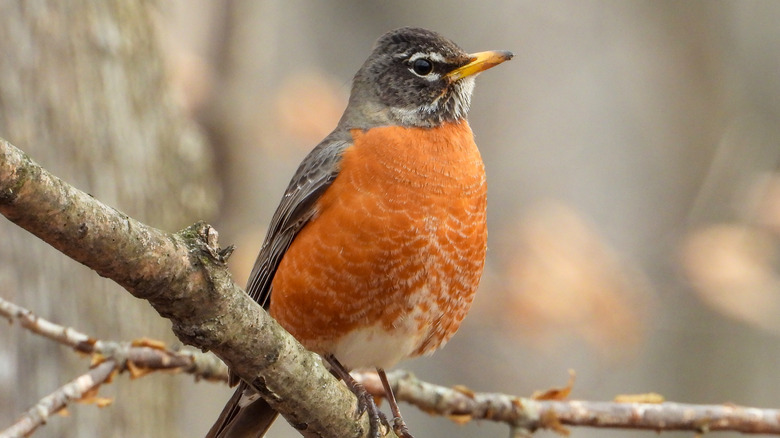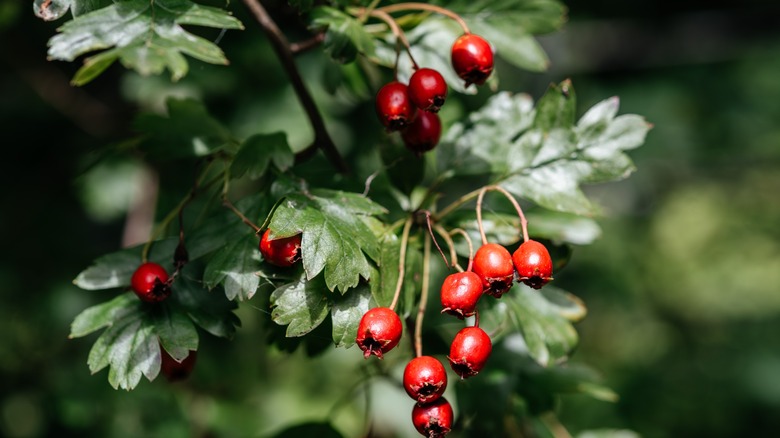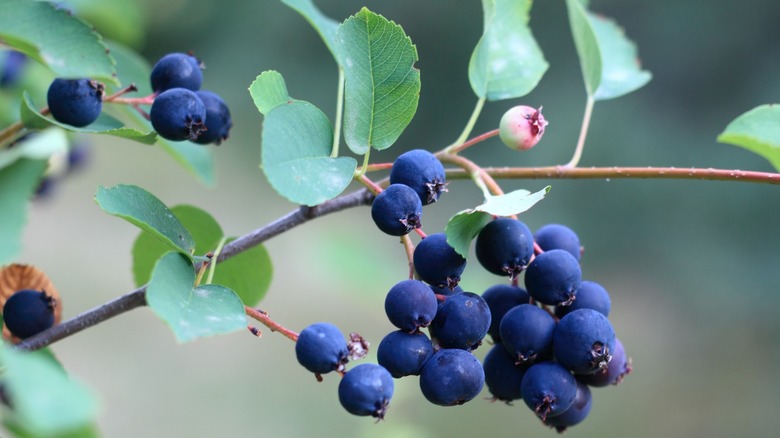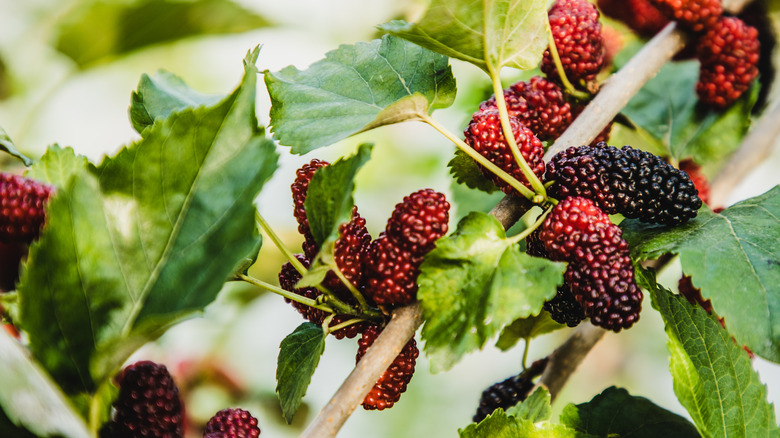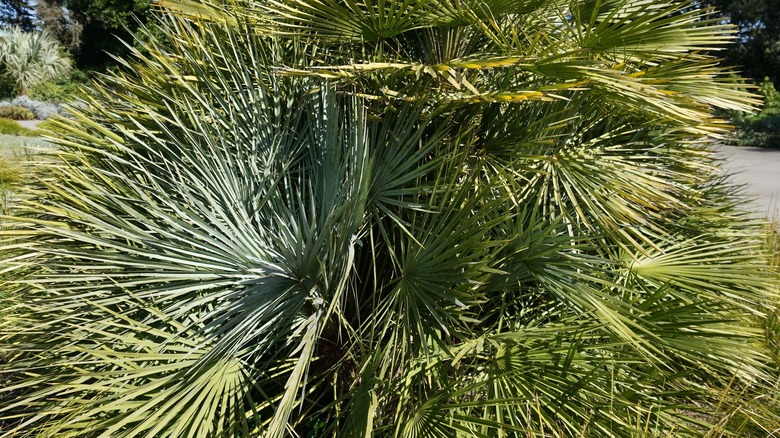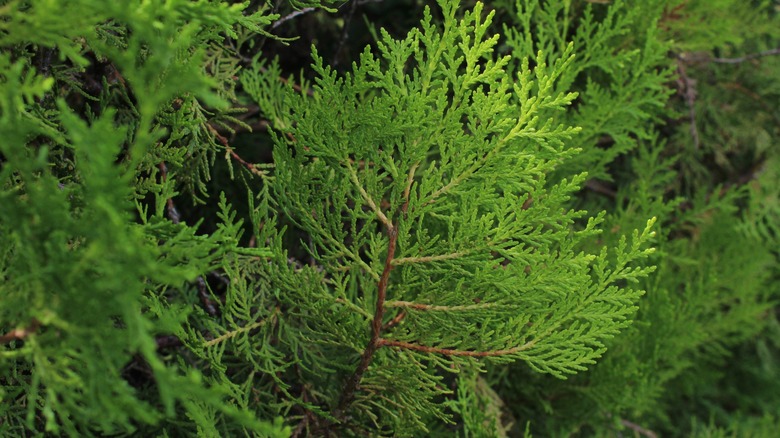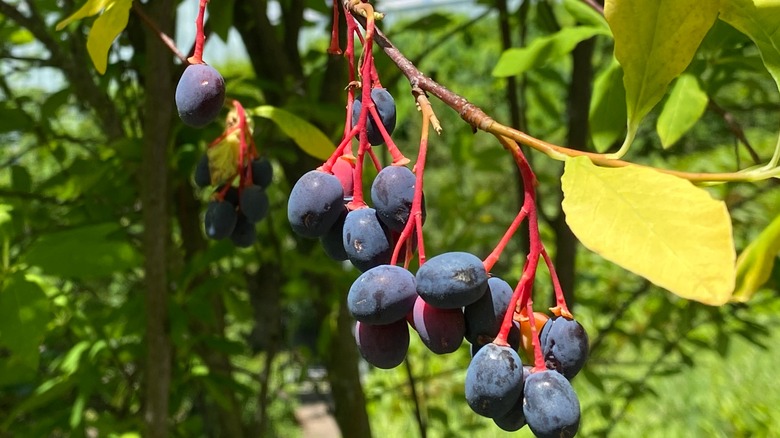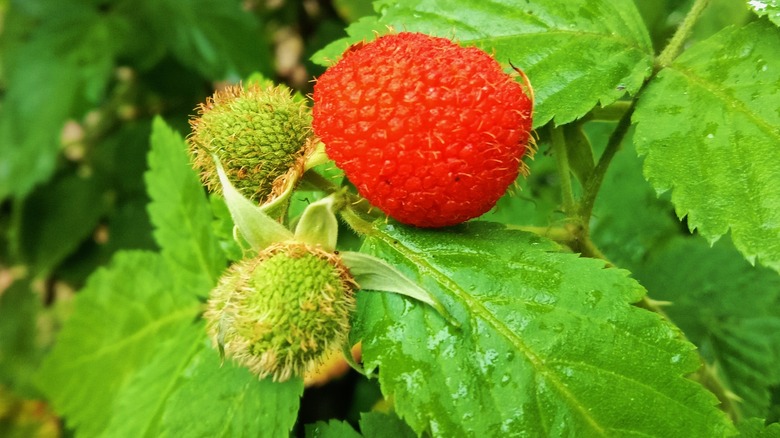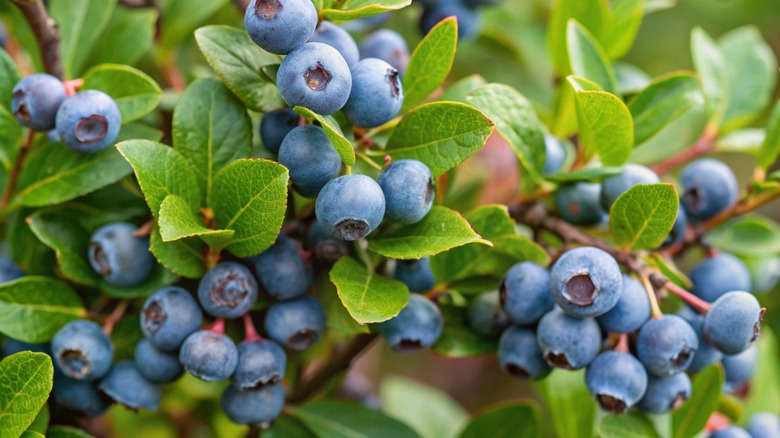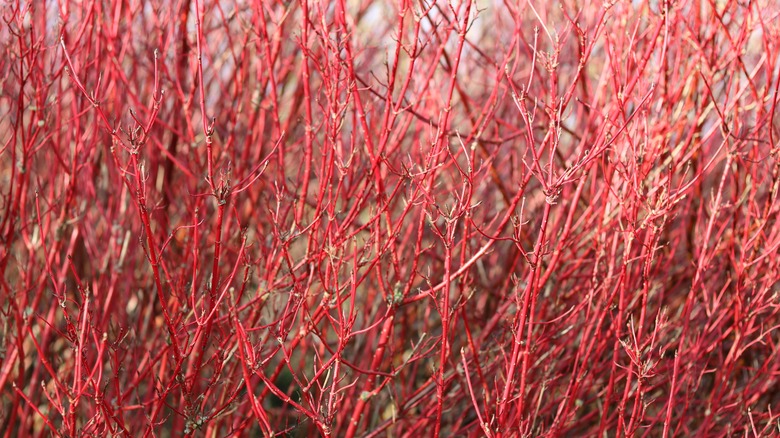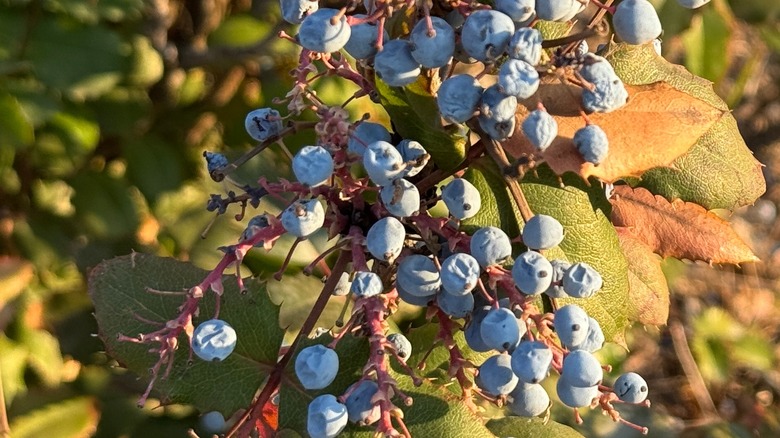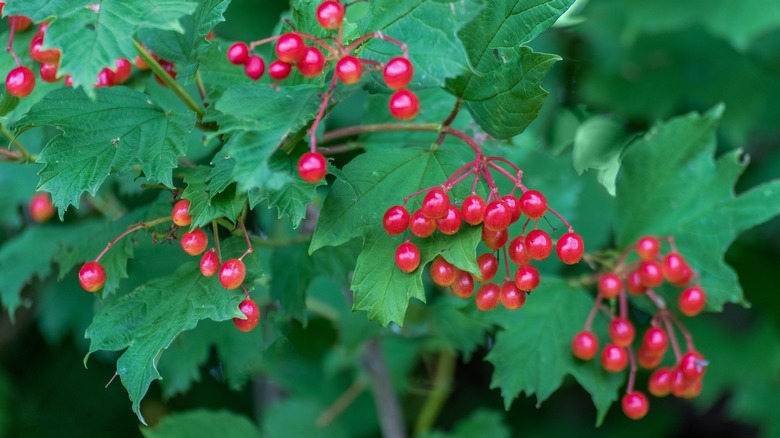Shrubs & Trees That'll Keep Robins Visiting Your Yard Year-Round
Robins, with their rust-colored bellies and chirpy birdsong, are a sight to see and hear in the garden. If you want to encourage more of these feathered friends to take residence in your yard, there are plenty of trees and shrubs you can plant that will have them packing up their twigs and setting up camp right under your nose (or hedgerows, as the case may be.) Robins are known for nesting as early as January in preparation for breeding from April to June. They are especially drawn to evergreen trees such as conifers during this time because they will be in full leaf. By comparison, deciduous trees may be bare and cannot provide enough protection. However, deciduous plants can be more alluring to robins in late summer and fall.
Shelter is not the only thing to consider when planning how to attract robins to your garden; providing a source of food is also important. To keep these winged wild birds visiting your yard throughout the year, plant a variety of trees and shrubs that produce tasty fruits at different times. For example, the Indian plum tree bears fruit in May and June, while the highbush cranberry can provide fruit for robins right into winter. Robins also like open lawns where they can gather material for their nests and feed on juicy earthworms. Here is a closer look at what to plant to get these friendly birds visiting.
Robins feast on hawthorn fruits through winter
Hawthorns (Crataegus spp.) are hugely popular with robins towards the end of each year when their flowers descend into small, spherical red fruits. Known as 'haws', these fruits are technically pomes but are often regarded as berries because of their miniature size. If you have hawthorn trees in your yard, you'll likely notice robins appearing on the branches in fall when the haws ripen. As a deciduous tree, hawthorns lose their leaves as winter approaches, but the haws often remain. It's delightful to see robins perching on the bare branches of the hawthorn tree, helping themselves to the bright crimson fruits all through winter.
Hawthorns can be grown as small trees or shrubs in USDA hardiness zones 3 to 8. It's not hard to grow and care for a hawthorn tree because these plants are tolerant of a wide range of conditions. They will thrive in various soil types and they can withstand high levels of pollution, making them ideal for urban environments. They can also grow in both direct sun and partial shade. However, if you want to bring robins flocking to your yard, then a spot in full sun will be preferable. When growing in brighter conditions, hawthorns produce a greater abundance of fruits to satisfy hungry birds.
The Saskatoon serviceberry shrub attracts robins seeking shelter
The Saskatoon serviceberry (Amelanchier alnifolia) shrub is to robins what the mall is to teenagers: a great spot to hang out and grab a bite to eat. As a deciduous plant, it keeps its leaves through spring, summer, and fall, providing robins with a cozy refuge from bad weather and predators during these seasons. However, not only do they like to hide in the tree, but during June and July, they will find ripening fruits ready to be demolished by their eager beaks.
Growing a Saskatoon serviceberry is a brilliant way to attract robins throughout multiple seasons, and as an added bonus, it also works as a beautiful ornamental tree. It is one of the first garden specimens to bloom in the spring, and the foliage puts on a strikingly colorful display throughout fall. Though this plant will adapt to most soil types, it is best to grow it in a well-draining soil that is kept consistently moist. While it will tolerate drought, a well-watered serviceberry will produce more fruits to attract more birds. Remember to avoid pruning it through summer since robins might be nesting in it.
Robins love eating messy mulberry fruits in spring and summer
One surefire way to get robins, and other birds, making an appearance in your yard is to grow a mulberry tree (Morus spp.). Robins cannot resist the juicy fruits of these trees, which ripen at various times of the year depending on the species. Though there are many types of mulberry trees, the three most widely available are the black mulberry, red mulberry, and white mulberry. The fruits of the black mulberry will have robins arriving in late summer, while the red and white mulberry trees fruit in spring.
Though mulberry trees are a huge hit with robins, you may want to think twice before planting this bird-attracting tree in your yard. The fruits themselves are intensely colored and will stain anything they come into contact with. Birds who have feasted on the mulberries further exacerbate the issue. After eating the fruits, birds produce dark purple droppings that can leave unsightly staining on your patio, garden furniture, or decking. The best place to grow a mulberry tree is at the back of the garden to keep the mess created by the fruits as far from the home as possible. They are easy plants to take care of, thriving in full sun and partial shade. They will perform best in nutrient-dense, well-draining soils, but they can also adapt to poor soils.
Sabal palm fruits attract these red-breasted birds in late summer
Florida's state tree is one popular fruit and berry tree that birds love, and robins are no exception. The small black fruits produced by sabal palms (Sabal palmetto) in late summer are prized among robins, which serve to disperse the seeds in their droppings. As a result, you could find new sabal palm saplings in your garden because the seeds of these trees germinate easily.
Sabal palms are also known as cabbage palms and make good garden companions in warm climates for anyone who wants to attract robins. They can tolerate temperatures down to around 15 degrees Fahrenheit, which makes them suitable for growing in USDA hardiness zones 8 and above. Plant the tree in a sunny spot because although these trees can tolerate light shade, they will perform best in full sun. Once they are well established, sabal palms are incredibly easy to care for. They can survive both drought and flooding and will adapt to most soil types. They produce clusters of white flowers towards the end of spring that are popular with pollinators like bees.
Conifers make cozy homes for robins in spring
Conifers encompass hundreds of species of evergreen trees, including various pine, fir, and spruce trees. They typically have dense foliage that makes them ideal for nesting robins. It is worth noting that when nesting later in the year, robins prefer deciduous trees so they are unlikely to be found seeking shelter in conifers during fall and winter. However, many types of conifers, such as red cedar and juniper trees, also produce berries and cones that are used as a source of energy among robins and other winged wildlife through the colder months. With this in mind, you can provide year-round food and shelter for birds by adding these trees to your yard.
There is a wide range of coniferous evergreen shrubs and trees that can elevate your landscaping while also providing an important source of food and safety for birds. Consider the Leyland cypress tree (Cupressus x leylandii) if you want a fast-growing specimen, or the American arborvitae (Thuja occidentalis) for dense hedging. Just remember that many conifers are often plants you shouldn't grow right next to your house due to invasive roots that can become a problem for foundations or underground water lines. Conifers also contain oils that make them more susceptible to burning, so keep them a good distance from your home, especially if your region is prone to wildfires.
Indian plum trees attract robins from May to June when fruits ripen
The Indian plum tree (Oemleria cerasiformis) produces fruits that robins love to eat. This deciduous plant can take the form of a large shrub or small tree, and blooms very early in the season at the end of winter. The droopy white blossoms appear in clusters and are often the first flowers of the year to arrive. These fragrant blooms then descend into small plums that ripen from May to June, taking on a black-blue color. If you love having robins, hummingbirds, and butterflies visiting your yard, then the Indian plum tree is an excellent choice for attracting them.
Growing the Indian plum tree at home couldn't be easier because this species adapts to a wide range of conditions. It will grow well in a variety of different soil types and can thrive in both dry and moist soils. It tolerates shade so it can work as an understory plant, but if you want a profusion of flowers and fruits, it should be positioned in direct sunlight. Though the plums of this tree are popular with robins and a number of other types of birds, they are also attractive to small mammals like foxes and deer. Anyone with an existing pest problem should avoid planting the Indian plum tree because this could exacerbate the issue.
Grow thimbleberry shrubs to bring robins flocking in fall
Looking for a new shrub to add to your garden that will garner the attention of robins in a hurry? Consider the thimbleberry (Rubus parviflorus), which produces fruits as early as its second or third year of cultivation. These fruits, which closely resemble the look of raspberries, are popular with robins and many other types of birds, as well as squirrels and chipmunks. The white flowers of the thimbleberry are very attractive, blooming in April and May to add beauty to the garden. By fall, the thimble-shaped berries have formed and ripened, bringing robins into the yard for a feast.
Thimbleberry plants are suitable for growing in USDA hardiness zones 3 to 8 and need to be positioned in partial sun for best results. Unlike other berry bushes such as blackberries and raspberries, thimbleberry plants don't produce thorns, making them ideal for families with young children who want to get involved in gardening. The shrubs are low-maintenance to care for since they can adapt to both dry and moist soils.
Plant huckleberry hedges to entice robins in October and November
This evergreen shrub is one berry-producing bush that's perfect for your yard. Huckleberry (Vaccinium arboreum) features attractive, shiny foliage that is worthy of dried floral arrangements or cut flower bouquets, and both the fruits and leaves of this plant are valuable food sources for an array of animals. Any black-colored berries that don't get snapped up by hungry robins and songbirds can be made into a tasty jam. The fruits will ripen around October or November, bringing adorable birds to the garden.
As a small to medium shrub with a dense growth habit, the huckleberry plant makes a great choice for hedging. It can grow in both full sun and partial shade and will adapt to a variety of soil types. Once established, it can withstand drought. Unfortunately, as well as attracting robins, the huckleberry plant is also considered delicious among deer, black bears, and mice. If you struggle with wildlife causing problems in your garden, it would be wise to avoid planting huckleberries.
Robins visit red twig dogwood shrubs for food and refuge
Red twig dogwood (Cornus sericea) provides a haven for robins through spring and summer when the plant is in leaf. At other times of year, robins, and many other birds, will flock to this deciduous shrub for the tasty white berries it produces. The list of birds that will visit is extensive and includes cardinals, purple finches, kingbirds, magpies, mockingbirds, brown thrashers, and cedar waxwings. The flowers of this plant bloom at the beginning of summer and descend into fruits toward the end of the warmer months. They can remain on the stems right into fall.
Red twig dogwood is not just a bird magnet; it will also bring a pop of color to your yard with its vibrant scarlet stems. It is not heat tolerant, and is suitable for growing in USDA hardiness zones 2 to 7. Plant the shrub in a spot where it can be appreciated all year round since it provides interest through every season. It prefers fertile soil that is kept consistently moist, but it can also survive in wet or dry conditions. As a bonus, deer are rarely interested in red twig dogwood, so you won't need to worry about attracting unwanted wildlife to your yard with this plant.
Cultivate Oregon's state flower for more robins in late summer and fall
Oregon grape plants (Mahonia spp.) produce fruits that look similar to grapes but are not related to the grape family. Instead, the dark blue fruits are berries that ripen in September and October, much to the enjoyment of local robins, grouse, sparrows, and pheasants. The berries are also edible for humans, though they are considered to taste quite sour. If you grow this plant in your yard, you could also find yourself hosting painted lady butterflies, who love to drink the nectar of its yellow flowers.
Lazy gardeners rejoice! This is an easygoing shrub that can adapt to varying light and soil conditions. It is usually found growing in woodlands and forests beneath the canopy of taller trees since it fares well in shade, but it can also grow well in sunny sites. It prefers to grow in soils that are moist and well-draining, but it will also tolerate drought, so you don't need to panic if you forget to water it. As is often the case with plants that produce berries, you might have to watch out for pests: foxes and raccoons are known to favor Oregon grape berries.
American highbush cranberry will have robins feasting from summer to winter
If you like to forage wild fruits, you might already be familiar with the American highbush cranberry (Viburnum opulus var. americanum L. Ait), which produces berries that are popularly used in preserves and sauces. Robins, along with other birds such as cedar waxwings, are also known to enjoy nibbling its fruits. The berries ripen in late August and early September, but they often remain on the stems of the plant through winter. Despite its common name, this plant is not related to the true cranberry and instead belongs to the honeysuckle family.
Highbush cranberry plants are hardy through USDA zones 2 to 7. They are quite sizable, reaching up to around 15 feet in height, and therefore make a good choice as privacy screening or as a low-maintenance hedge. Since these plants adapt well to both sun and shade, you won't need to worry too much about where in your garden to position them. They can tolerate most soil types and don't need to be watered frequently. However, they are not drought tolerant, so try not to let their soil completely dry out.
